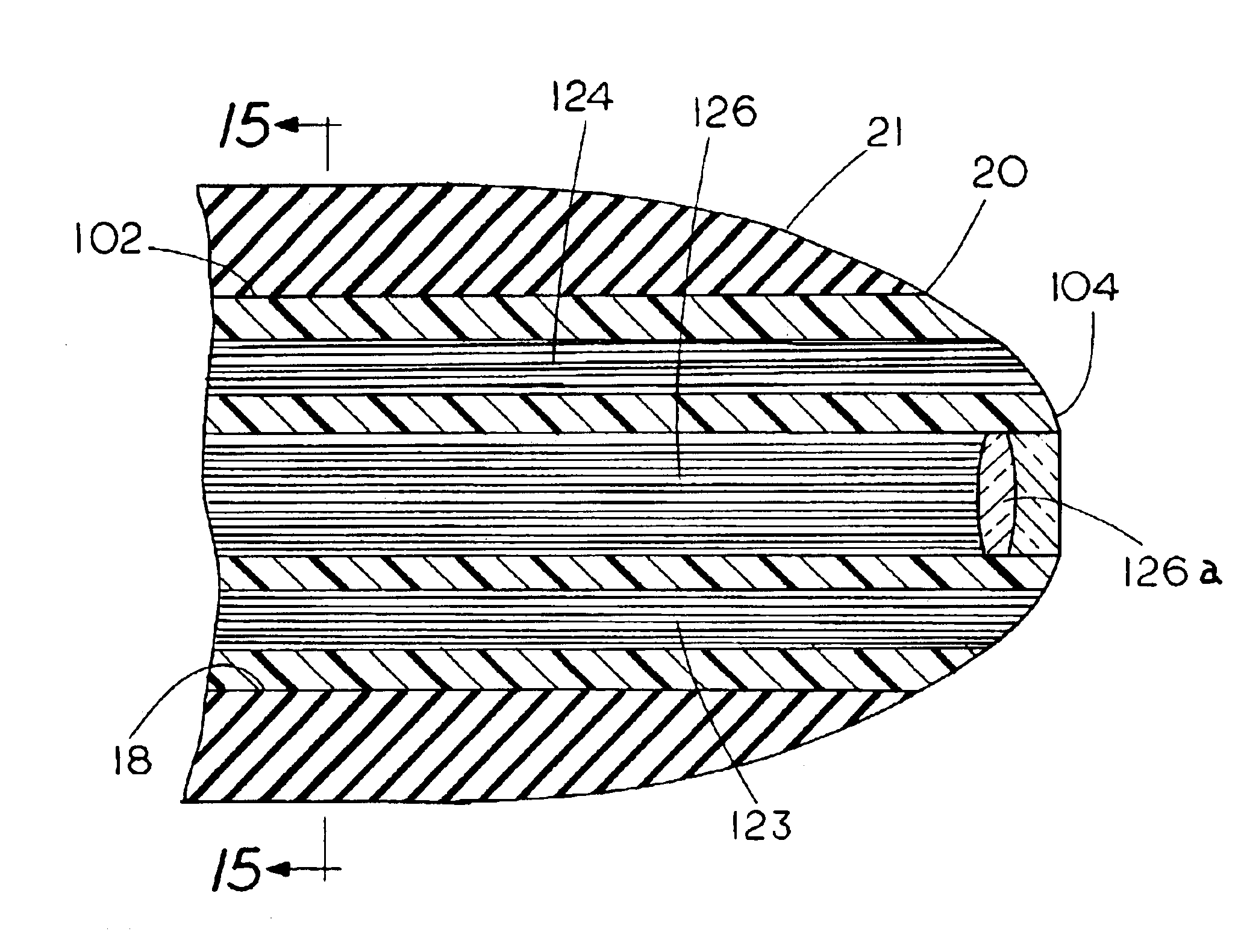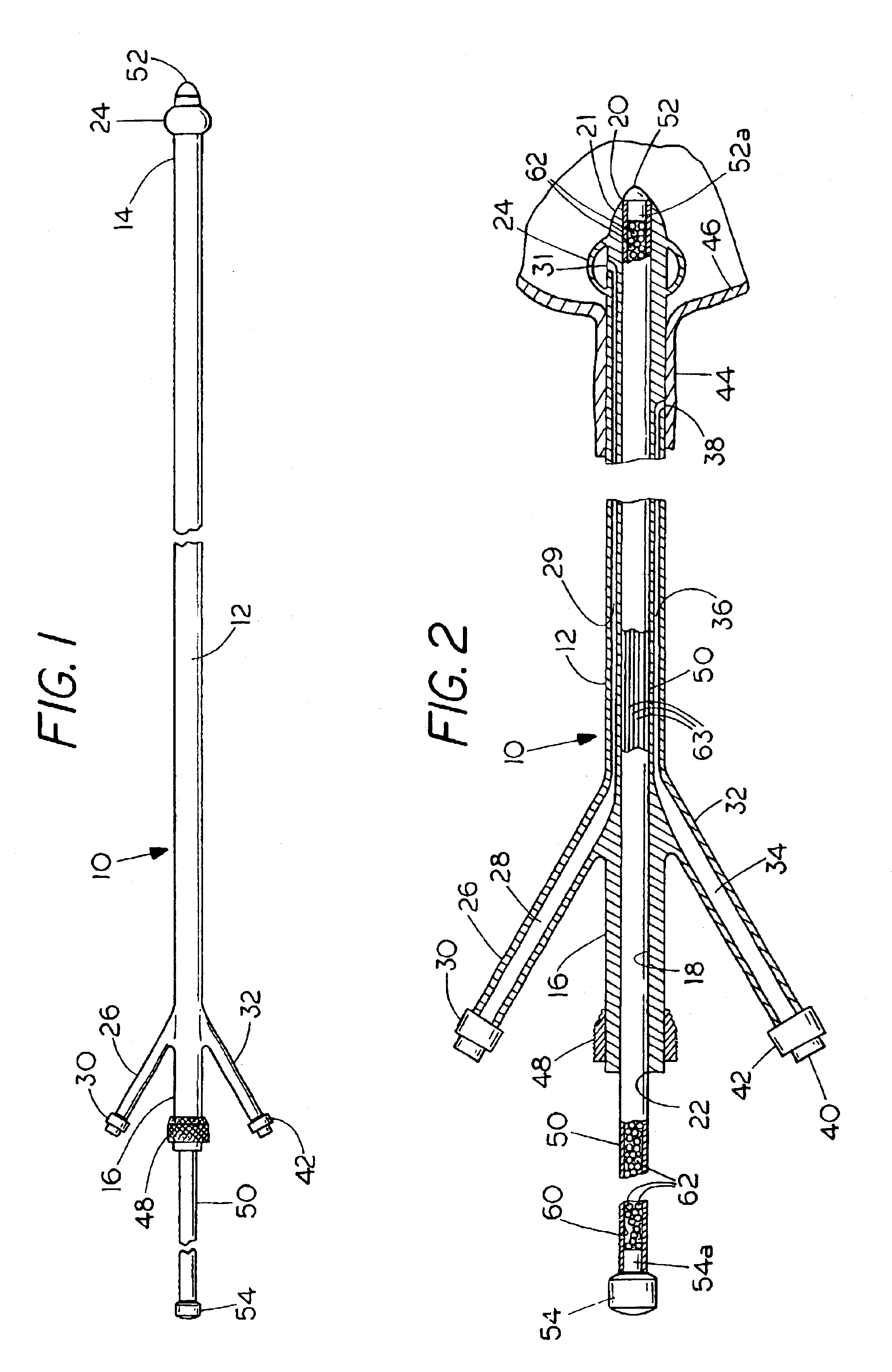Method and apparatus for facilitating urological procedures
a urological and urological technology, applied in the field of medical science, can solve the problems of urethral obstruction, substantial burden on the delivery of effective care through the healthcare system, and high cost for the healthcare system, hospitals, clinics and doctors' offices
- Summary
- Abstract
- Description
- Claims
- Application Information
AI Technical Summary
Benefits of technology
Problems solved by technology
Method used
Image
Examples
example 1
[0053]The use of the instrument in accordance with the present invention will be described in carrying out a transurethral resection of a bladder tumor. This procedure is usually performed under a general or spinal anesthetic because of the discomfort / pain from passage of the instrument and also from that which might occur from the resection of the tumor by electrical current. However, if one is using laser energy (neodinium YAG or Holmium lasers, for example), the patient's intraoperative discomfort / pain is usually less as these procedures can, in that case, be performed without general or spinal anesthesia.
[0054]First, the working sheath 10 is inserted through the urethra as shown in FIG. 2. The obturator 50 is then removed. Generally, a rigid cystoscope (usually 20-23 French) is passed through the lumen 18 of the sheath 10 with a rigid optical lens to evaluate the urethra and bladder to determine the number of tumors, their locations, extent of involvement of the bladder, and pos...
example 2
[0058]The invention will now be described in conducting a laparoscopic pelvic reconstruction procedure, e.g., culpo-suspension, paravaginal repairs, and enterocele repairs.
[0059]First, the working sheath 10 is inserted as shown in FIG. 2. The obturator 50 is then removed. A Foley catheter is then passed through the lumen 18 of the sheath 10 to keep the bladder empty, or the sheath 10 itself can be used for this purpose without a Foley. When the procedure is performed laparoscopically through the working sheath 10, it is frequently necessary to perform a cystoscopic evaluation with the examination of the bladder by passing urethral catheters through the lumen 18 (performed cystoscopically) during or at the end of the laparoscopic procedure. The Foley catheter is removed and the cystoscope is introduced next through the lumen 18 of the sheath 10.
[0060]If it is necessary to perform the evaluation during the laparoscopic procedure, it is necessary that the surgeon carry out the procedur...
example 3
[0062]The invention will be described in removing kidney stones, Nephrolithiasis (renal and ureteral calculi) are quite common urologic problems, requiring emergent surgical intervention. When renal or ureteral calculi are causing blockage of the upper urinary tracts, patients will most commonly experience severe and disabling colicky pain requiring immediate emergency medical attention, including pain management and surgical intervention. No population is immune from the renal colic attack as a result of kidney stones (and as will be discussed later), especially astronauts who are at even greater risk. When these attacks occur, patients are initially evaluated in the emergency room. Once the diagnosis of nephrolithiasis is made, they are admitted to the hospital for management and probable surgical intervention if it is unlikely they will pass the stone on their own or if pain management is a problem.
[0063]First, the working sheath 10 is introduced into the bladder as shown in FIG....
PUM
 Login to View More
Login to View More Abstract
Description
Claims
Application Information
 Login to View More
Login to View More - R&D
- Intellectual Property
- Life Sciences
- Materials
- Tech Scout
- Unparalleled Data Quality
- Higher Quality Content
- 60% Fewer Hallucinations
Browse by: Latest US Patents, China's latest patents, Technical Efficacy Thesaurus, Application Domain, Technology Topic, Popular Technical Reports.
© 2025 PatSnap. All rights reserved.Legal|Privacy policy|Modern Slavery Act Transparency Statement|Sitemap|About US| Contact US: help@patsnap.com



